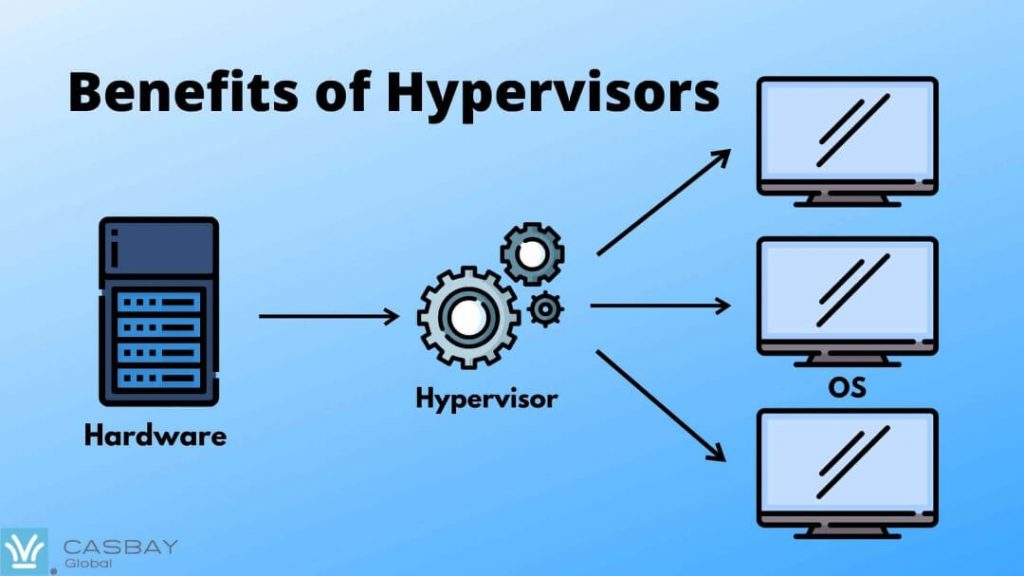There are several advantages to using a hypervisor that hosts multiple virtual machines:
- Speed: It allows the immediate creation of virtual machines, unlike the bare metal servers. This makes it easier to configure resources according to the needs of dynamic workloads.
- Efficiency: It runs multiple virtual machines on the resources of one physical machine can also make more effective use of one physical server. Running multiple virtual machines on the same physical machine is more cost-effective than running multiple underutilized physical machines on the same task.
- Flexibility: The bare metal hypervisor allows the operating system and its related applications to run on various hardware types. Because the hypervisor separates the operating system from the basic hardware, the software no longer depends on specific hardware devices or drivers.
- Portability: It allows multiple operating systems to reside on the same physical server (host machine). Because the virtual machines that run are independent of the physical machine, they are portable. IT teams can shift workloads and allocate networking, memory, storage and processing resources across multiple servers as needed, moving from machine to machine or platform to platform. When an application needs more processing power, the virtualization software allows it to seamlessly access additional machines.
Container vs hypervisor
Both of them are involved in making applications work faster and more efficient, but they achieve this goal in different ways.
Hypervisors:
- Using virtual machines, the operating system can run independently of the underlying hardware.
- Shared virtual computing, storage, and memory resources.
- Multiple operating systems (bare metal hypervisors) can be run on a single server, or they can be installed and isolated from a standard operating system (hosted hypervisors).
Container:
- Allow applications to run independently of the operating system.
- Can run on any operating system-they only need a container engine to run.
- High portability, because in the container, the application has everything it needs to run.
Both of them are used for different purposes. The hypervisor is used to create and run virtual machines (VM). Each virtual machine has its own complete operating system, which is safely isolated from other operating systems. In contrast to VMs, containers only package applications and related services. This makes them lighter and more portable than VMs, so they are often used for fast and flexible application development and movement.
Read more here for details about types of hypervisors.




